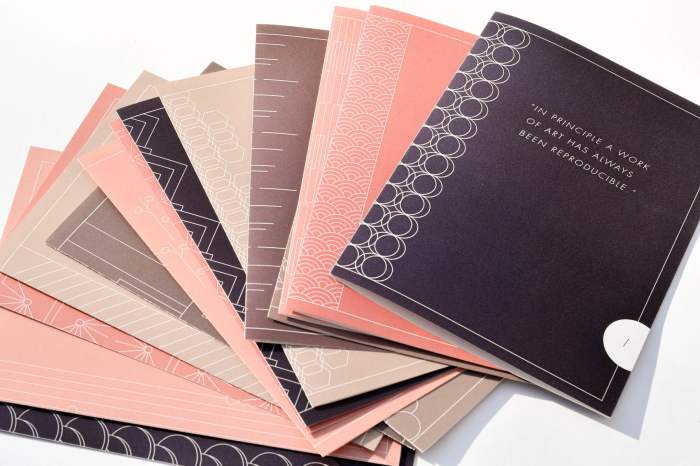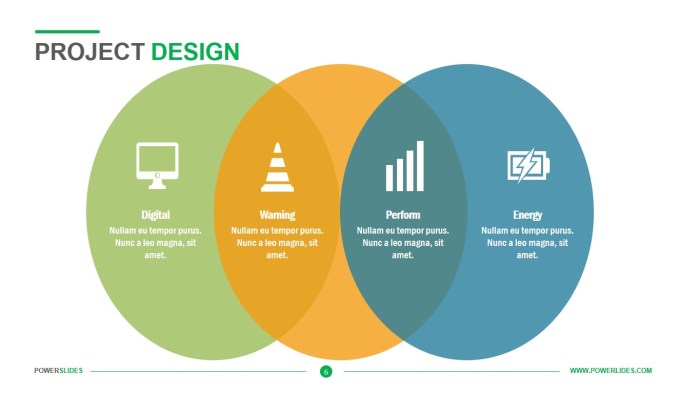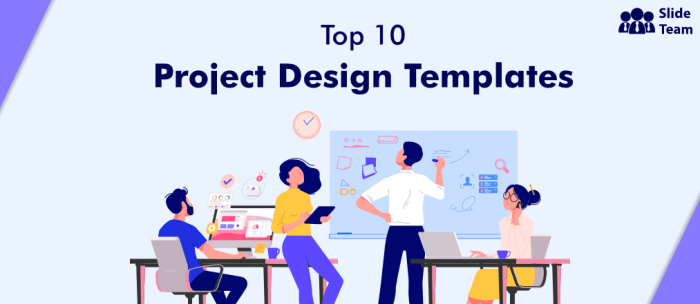Designs for Project: Crafting Success Through Innovative Solutions
Embark on a journey through the realm of project designs, where creativity and strategy intertwine to shape the course of successful ventures. This exploration delves into the intricacies of design choices, user-centered principles, and collaborative processes that elevate projects to new heights.
Let's dive into the world of project designs and unravel the key elements that make them crucial for project success.
Types of Designs for Project
When it comes to project development, selecting the right design is crucial for success. Different types of designs are commonly used, each serving a specific purpose and contributing to the overall outcome of the project. Let's explore some of the most popular design types and their importance in project development.
Waterfall Design
The Waterfall design approach is a traditional linear model where each phase must be completed before moving on to the next. This sequential process ensures thorough planning and documentation, making it ideal for projects with clearly defined requirements. A successful project that utilized the Waterfall design is the construction of major infrastructure projects like bridges or buildings.
Agile Design
Agile design is a flexible and iterative approach that focuses on delivering working software in short, incremental cycles. This design type allows for changes to be made throughout the project, based on feedback and evolving requirements. Successful projects like the development of mobile applications often use Agile design to quickly adapt to market demands and user feedback.
Prototyping Design
Prototyping design involves creating a working model of the final product to gather feedback and make necessary adjustments before full-scale development. This design type is beneficial for projects where user experience and functionality are critical. A notable example of a successful project that utilized Prototyping design is the design and development of user-friendly websites and applications.
Spiral Design
The Spiral design approach combines elements of both Waterfall and Agile methodologies, allowing for flexibility and risk management. This iterative process involves multiple cycles of planning, development, and testing to gradually refine the project. Projects with complex requirements and evolving technologies often benefit from the Spiral design approach.Overall, selecting the right design for a project is essential to ensure efficiency, quality, and successful outcomes.
By understanding the different types of designs available and their respective advantages, project teams can make informed decisions that align with project goals and requirements.
Factors Influencing Design Choices

When choosing a design for a project, several key factors come into play that influence the decision-making process. These factors can range from project requirements to budget constraints and design flexibility.
Project Requirements Impact
Project requirements play a crucial role in determining the design direction. The specific needs and goals of a project will dictate the type of design that is most suitable. For example, if a project requires a user-friendly interface, the design will focus on usability and accessibility.
On the other hand, if the project is more focused on visual appeal, the design will prioritize aesthetics and creativity.
Budget Constraints vs. Design Flexibility
Budget constraints and design flexibility often present a trade-off in the decision-making process. A limited budget may restrict the resources available for a project, leading to simpler or more cost-effective design choices. On the other hand, a higher budget allows for more creative freedom and flexibility in design, enabling the implementation of innovative and unique concepts.
Balancing budget constraints with design flexibility is essential to ensure the project meets both financial and creative objectives.
Design Process for Projects

Creating a design for a project involves several key steps that are essential for its success. From initial brainstorming to final implementation, the design process plays a crucial role in shaping the outcome of a project.
Identifying Project Goals and Requirements
- Start by clearly defining the goals and requirements of the project. This step is crucial in setting the direction for the design process.
- Collaborate with stakeholders to gather input and ensure that all project objectives are well understood.
- Consider factors such as budget, timeline, and scope to establish realistic parameters for the design.
Concept Development and Ideation
- Once the goals are clear, begin brainstorming design concepts that align with the project objectives.
- Explore different ideas and approaches to find the most suitable design concept for the project.
- Iterate on the concepts based on feedback and refine them to meet the project requirements.
Design Implementation and Testing
- Translate the chosen design concept into actionable steps for implementation.
- Collaborate with team members to ensure a smooth execution of the design plan.
- Test the design at various stages to identify any issues or areas for improvement.
Feedback and Iteration
- Collect feedback from stakeholders and users to evaluate the effectiveness of the design.
- Use the feedback to make necessary adjustments and improvements to the design.
- Iterate on the design based on feedback until it meets the project goals and requirements.
Collaboration in the Design Process
Collaboration plays a key role in the design process, enabling different perspectives and expertise to come together to create innovative solutions. By working closely with team members, stakeholders, and users, the design process can benefit from diverse input and insights.
Effective collaboration fosters creativity, problem-solving, and ensures that the design aligns with the project goals. Ultimately, collaboration enhances the overall success of the project by bringing together the collective expertise and creativity of the team.
Importance of User-Centered Design
User-centered design is crucial in project development as it focuses on creating solutions that meet the needs and preferences of the end users. By incorporating user feedback throughout the design process, projects can deliver more effective and user-friendly outcomes.
Enhanced User Experience
User-centered design principles ensure that the end product is intuitive, accessible, and tailored to the specific requirements of the target audience. This approach helps in improving user satisfaction and engagement with the project.
- By conducting user research and gathering feedback, designers can gain valuable insights into user behaviors, preferences, and pain points.
- Iterative testing and prototyping based on user feedback allow for continuous improvement and refinement of the project design.
- Incorporating accessibility features and ensuring usability testing can enhance the overall user experience and reach a wider audience.
Examples of Successful Implementation
Projects like the redesign of the Google Maps interface, the development of user-friendly mobile banking apps, and the creation of intuitive e-learning platforms have all benefited from user-centered design practices. These projects have seen increased user engagement, higher retention rates, and overall positive feedback due to their focus on meeting user needs and expectations.
Final Wrap-Up

As we conclude our exploration of designs for project, we reflect on the vital role that design plays in project development. From user-centric approaches to budget considerations, each aspect contributes to the ultimate success of a project. Embrace the power of innovative design to steer your projects towards prosperity.
General Inquiries
How do project requirements impact design decisions?
Project requirements serve as the foundation for design decisions, guiding the selection of elements that align with the project's objectives and scope.
What is the significance of incorporating user-centered design principles?
User-centered design ensures that projects are tailored to meet the needs and preferences of the end users, resulting in enhanced user experiences and satisfaction.
How can collaboration impact project success in the design process?
Collaboration fosters diverse perspectives and expertise, leading to innovative design solutions and a higher likelihood of project success through collective input.




